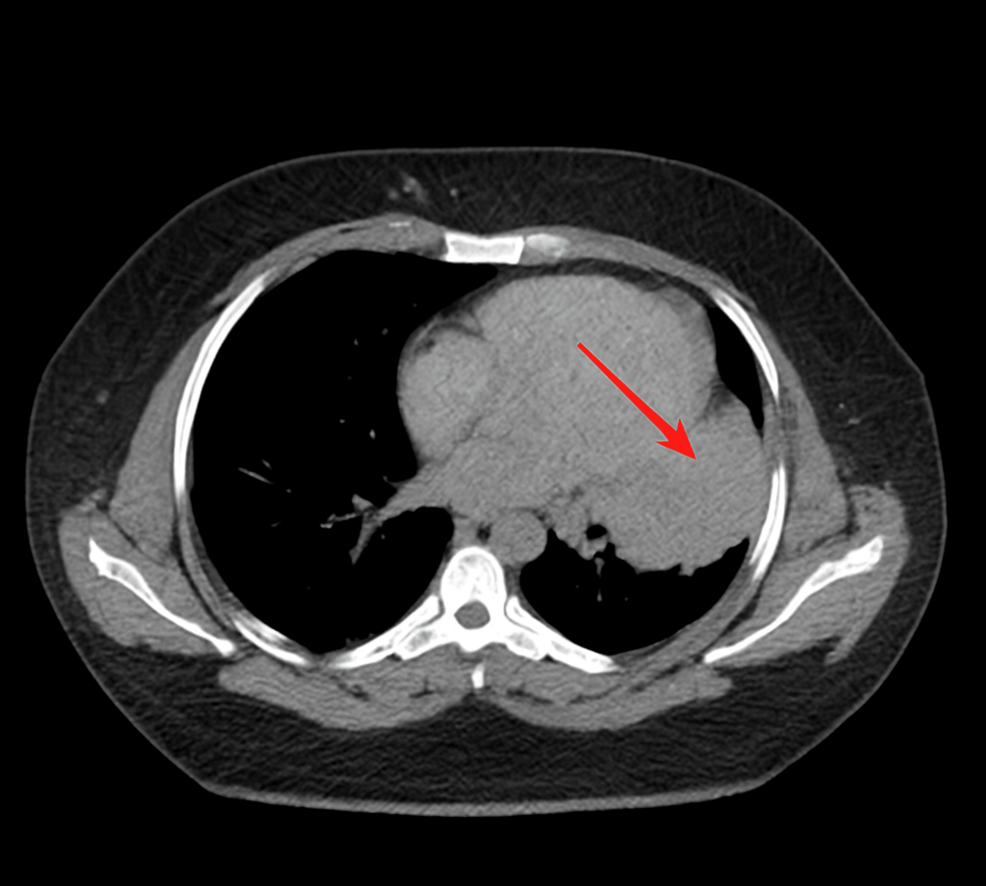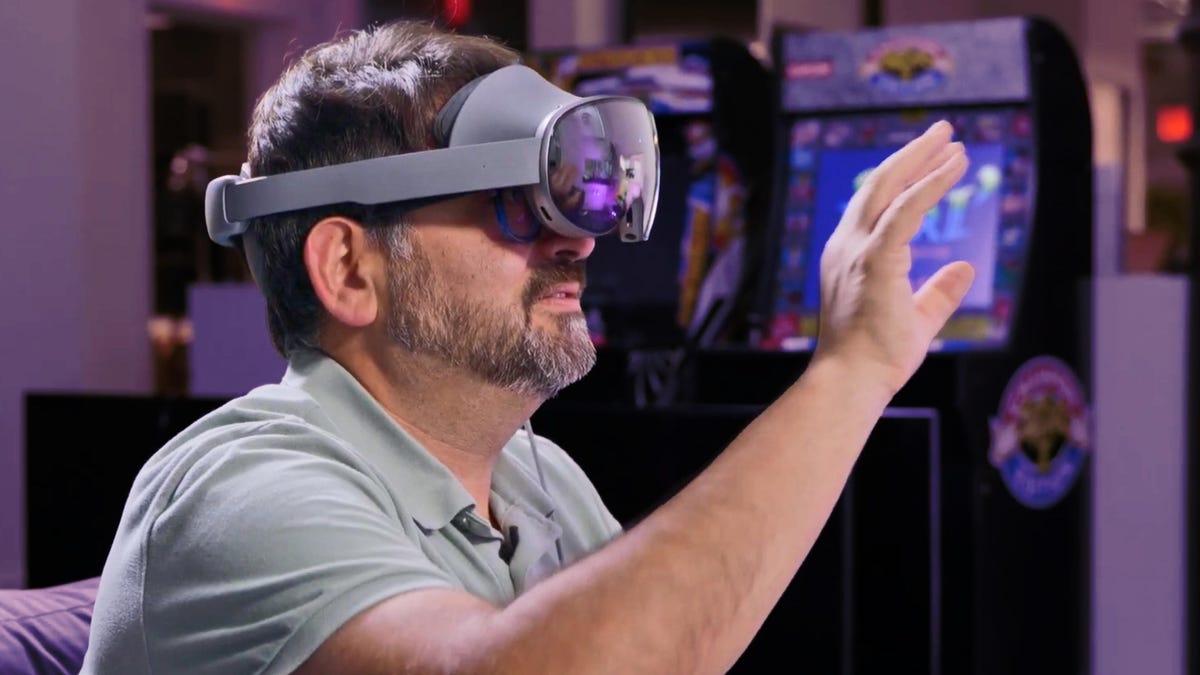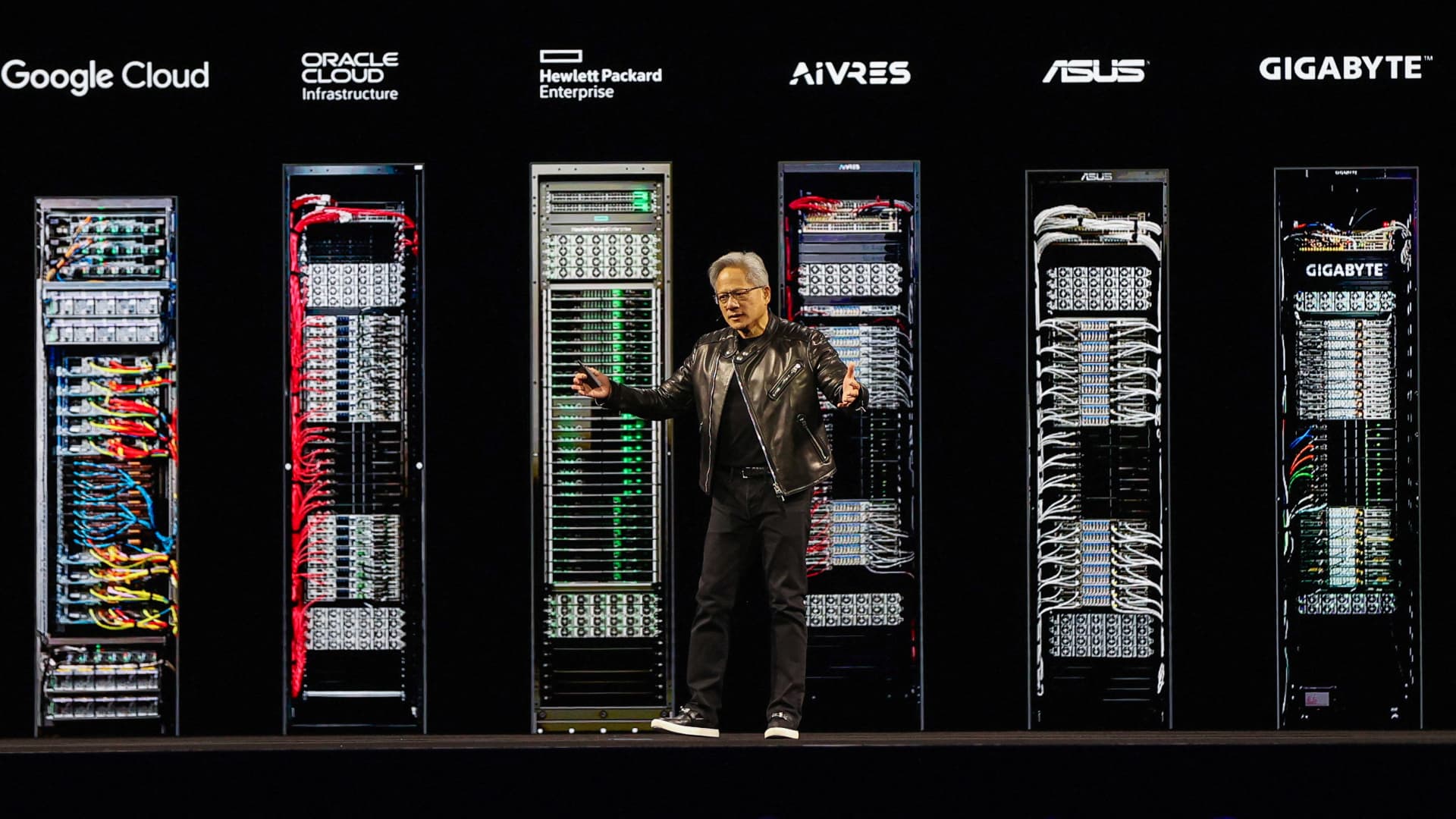Prince Harry…
Blog
-

Neoadjuvant Alectinib in a Patient With Anaplastic Lymphoma Kinase (ALK)-Mutant Stage III Lung Adenocarcinoma: A Case Report – Cureus
- Neoadjuvant Alectinib in a Patient With Anaplastic Lymphoma Kinase (ALK)-Mutant Stage III Lung Adenocarcinoma: A Case Report Cureus
- ALEX Trial Final Results at ESMO 2025: Alectinib Demonstrates Durable Overall Survival and Long-Term Disease Control in Advanced ALK-Positive NSCLC Oncodaily
- Study Investigates Alectinib Versus Crizotinib in the Adjuvant Setting for Patients With ALK+ NSCLC Cancer Nursing Today
- Alecensa Improves 4-Year Survival in Early ALK-Positive Lung Cancer Cure Today
- ‘Blow Your Mind’ Survival Improvement in Advanced, Mutated NSCLC MedPage Today
Continue Reading
-

Microsoft confirms it is working on free version of Xbox Cloud Gaming
Microsoft has confirmed that it is internally testing an ad-supported, free version of Xbox Cloud Gaming, which will allow users to stream select titles without requiring a paid Game Pass subscription. The company has officially confirmed this…
Continue Reading
-

Life’s Ingredients Found Frozen Beyond The Milky Way For First Time : ScienceAlert
For the first time, astronomers have seen life’s building blocks in ice beyond the borders of our galaxy.
Among a mix of complex organic molecules trapped in ice circling a newborn star in the Large Magellanic Cloud, researchers found ethanol,…
Continue Reading
-

Samsung and Google Told Me What Upcoming Smart Glasses Could Bring
With the Samsung Galaxy XR on my head, it looks somewhere between a Meta Quest and Apple’s Vision Pro. It’s big, weird and definitely not something I’d wear outside. But this expensive new mixed reality headset, a partnership between tech giants…
Continue Reading
-

The glaring security risks with AI browser agents
New AI-powered web browsers such as OpenAI’s ChatGPT Atlas and Perplexity’s Comet are trying to unseat Google Chrome as the front door to the internet for billions of users. A key selling point of these products are their web browsing AI…
Continue Reading
-

The rise of “catch a cheater” apps exploits our worst human tendencies
When people sign up for a dating site like Tinder, they don’t expect their profiles and personal information to be searchable — especially by a scorned lover, or worse. But that’s what popular apps like Cheaterbuster or CheatEye seem to be…
Continue Reading
-

Here’s where the James Webb Space Telescope and 4 other legendary spacecraft are in October’s night sky
Humanity’s understanding of the solar system has evolved dramatically following the advent of spaceflight. Over the past seven decades, thousands of sophisticated spacecraft have been launched on ambitious missions to look down on our planet,…
Continue Reading
-

Astronomers Just Found a Sneaky Asteroid Near the Sun—and It Highlights a Dangerous Blind Spot
Millions of asteroids are currently zipping through our solar system. These rocky remnants of the early solar system receive extra attention when their itinerary brings them too close to Earth—which, fortunately, astronomers can…
Continue Reading
-

AI spending is boosting the economy, many businesses in survival mode
Cameron Pappas, owner of Norton’s Florist
Norton’s
For Cameron Pappas, owner of Norton’s Florist in Birmingham, Alabama, the artificial intelligence boom is a world away.
While companies like Nvidia, Alphabet and Broadcom are lifting the stock market to fresh highs and bolstering GDP, Pappas is experiencing what’s happening in the real economy, one that’s far removed from Wall Street and Silicon Valley.
Small businesses like Norton’s, and companies of all sizes in retail, construction and hospitality, are struggling from higher costs brought by the Trump administration’s sweeping tariffs, and as downbeat consumers reduce their spending.
“We’ve just got an eagle eye on all of our costs,” Pappas, 36, told CNBC in an interview.
Norton’s generated $4 million in revenue last year, selling flowers, plants and gifts to locals. To avoid raising prices, which could cause customers to flee, Pappas has been forced to get creative, reworking some of his designs.
“If a bouquet has 25 stems in it, if you reduce that by three to four stems, then you’re able to keep the price the same,” Pappas said. “It’s really forced us to focus on that and to make sure that we’re pricing things the best that we possibly can.”
Pappas’ story and many like it are being masked in the macro data by the power of AI. In the first half of the year, AI-related capital expenditures contributed to 1.1% of GDP growth, according to a September report from JPMorgan Chase. That spending outpaced the U.S. consumer “as an engine of expansion,” the report said.
Total U.S. GDP increased at an annual rate of 3.8% during the second quarter of 2025 after falling 0.5% in the first quarter, the Commerce Department said.
U.S. manufacturing spending has contracted for seven straight months, according to the Institute for Supply Management. And construction spending has been flat to down, due to high interest rates and rising costs. Cushman & Wakefield said in a report this month that total project costs for construction in the fourth quarter will be up 4.6% from a year earlier because of tariffs on building materials.
The stock market shows a similar disconnect between AI and everybody else.
Nvidia CEO Jensen Huang delivers the keynote for the Nvidia GPU Technology Conference (GTC) at the SAP Center in San Jose, California, U.S. March 18, 2025.
Brittany Hosea-Small | Reuters
Eight tech companies are valued at $1 trillion or more and, to varying degrees, are all tied to AI. Those companies — Nvidia, Microsoft, Apple, Alphabet, Amazon, Meta, Tesla and Broadcom — make up about 37% of the S&P 500. Nvidia, with a $4.5 trillion market cap, accounts for over 7% of the benchmark’s value by itself.
Investors are giddy about the massive investments they’re seeing in AI infrastructure. Broadcom shares are up more than 50% this year after more than doubling in each of the prior two years, while Nvidia and Alphabet have jumped almost 40% in 2025.
That explains why the S&P 500 and Nasdaq are up 15% and 20%, respectively, reaching record highs on Friday, even as the government shutdown continues to cause economic angst.
Meanwhile, the S&P 500 subgroups that include consumer discretionary and consumer staples companies have increased by less than 5% year to date.
The latest troubling sign in the consumer market came on Thursday, when Target said it’s cutting 1,800 corporate jobs — the retailer’s first major round of layoffs in a decade. Target shares have plunged 30% this year.
“I think the message that the AI economy is sort of driving up the GDP numbers is a correct one,” Arun Sundararajan, a professor at New York University’s Stern School of Business, told CNBC in an interview. “There may be weakness in the rest of the economy, or not weakness, but there may be more modest growth.”
Investors will hear all about AI in the coming days, the busiest stretch of the quarter for tech earnings, and will be listening closely for additional guidance on capital expenditures. Meta, Microsoft and Alphabet report on Wednesday, followed by Apple and Amazon on Thursday.
Nvidia’s stock over the last year.
Last month, Nvidia announced a $100 billion investment in OpenAI, a startup valued at $500 billion. The capital will help OpenAI deploy at least 10 gigawatts of Nvidia systems, which is roughly equivalent to the annual power consumption of 8 million U.S. households.
Shares of Advanced Micro Devices have doubled this year and soared more than 20% earlier this month after the chipmaker announced a deal with OpenAI, while Oracle has been on a tear of late due to its ties to OpenAI and the broader infrastructure buildouts.
“Are we sort of inflating the economy now, thereby setting ourselves up for a crash in the future?” Sundararajan said. He added that he’s not seeing signs that demand for AI infrastructure will slow anytime soon.
‘Tariff price management’
When it comes to local businesses, most only know about the AI gold rush from the news headlines. One in four small business owners are stuck in “survival mode” as they contend with challenges like rising costs and tariffs, according to a September KeyBank Survey. It’s a segment of the economy that routinely accounts for about 40% of the nation’s GDP.
Pappas’ flower shop was founded in 1921, and purchased by his dad in 2002. The business has survived the Great Depression, World War II and the Covid pandemic. Pappas said his father, who died in 2022, reminded him that these periods were “just another season” for Norton’s, and that such challenges come with the territory.
But Trump’s tariffs have created a whole new set of constraints, as roughly 80% of all cut flowers in the U.S. are imported from countries like Colombia and Ecuador, according to the U.S. Department of Agriculture.
There’s no way for Norton’s to avoid higher import costs, but Pappas said he’s started buying some flowers directly from South American growers, which saves him money versus going through distributors that charge extra.
Pappas said it’s part of his “tariff price management” effort.
Trump’s tariffs will cost global businesses more than $1.2 trillion this year, and most of those costs are being passed onto consumers, according to S&P Global.
With the holiday season rapidly approaching, consumer sentiment is of particular importance. The picture is bleak.
The majority of U.S. consumers, 57%, that responded to a Deloitte survey published this month said they expect the economy to weaken in the year ahead, up from 30% a year ago. It’s the most negative outlook since the consulting firm began tracking sentiment in 1997.
Gen Z consumers, which the survey defined as ages 18 to 28, said they plan to spend an average of 34% less this holiday season compared to last year. Millennials, those between 29 and 44, said they expect to spend an average of 13% less this holiday season.
Additionally, seasonal hiring in the retail industry is poised to fall to its lowest level since the 2009 recession, according to a September report from job placement firm Challenger, Gray & Christmas.
The firm released another report earlier this month that showed new hiring in the U.S. has totaled just under 205,000 so far this year, off 58% from the same period last year.
The Starbucks logo is displayed in the window of a Starbucks Coffee shop on Sept. 25, 2025 in San Francisco, California.
Justin Sullivan | Getty Images
Starbucks announced a $1 billion restructuring plan in September that involves closing several stores in North America. Around 900 nonretail employees were laid off as part of the plan, and the company let go of another 1,100 corporate workers earlier this year.
Starbucks shares are down about 6% this year.
Shares of Wyndham Hotels & Resorts slumped on Thursday after the hotel chain issued disappointing third-quarter results. CEO Geoff Ballotti cited a “challenging macro backdrop” in the company’s earnings release. The stock is down roughly 25% year to date.
Even in parts of the tech industry that have benefited the most from the AI boom, companies have been conducting layoffs. Microsoft announced plans to cut around 9,000 jobs in July, which the company partly attributed to reducing layers of management. Salesforce is one of a number of tech companies that have announced layoffs, saying that AI can now handle the work.
But Hatim Rahman, an associate professor specializing in AI at Northwestern University’s Kellogg School of Management, said that most businesses using AI for efficiencies won’t find them right away. So companies can’t count on the technology to counter declining revenue and, Rahman said, “the road to the future is going to be bumpy.”
“AI is not a plug-and-play solution,” Rahman said. “For many organizations, it’s going to involve engagement with people, processes, culture, tools to be able to reap the benefits. And in the aggregate, it’s going to take time.”
WATCH: The AI boom is lifting the stock market, but it may be masking a weaker economy
 The AI boom is lifting the stock market, but it may be masking a weaker economy
The AI boom is lifting the stock market, but it may be masking a weaker economyContinue Reading
